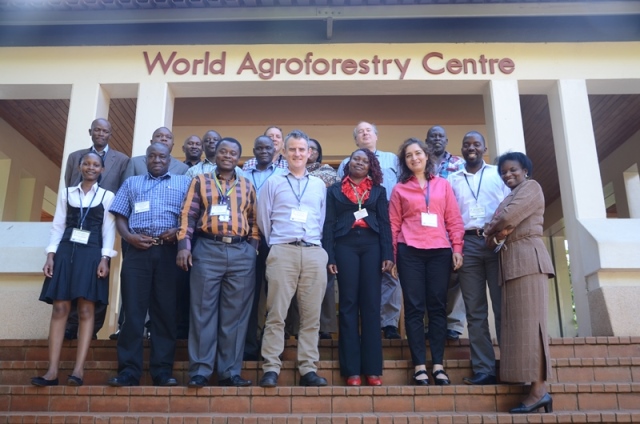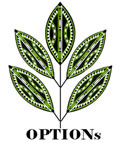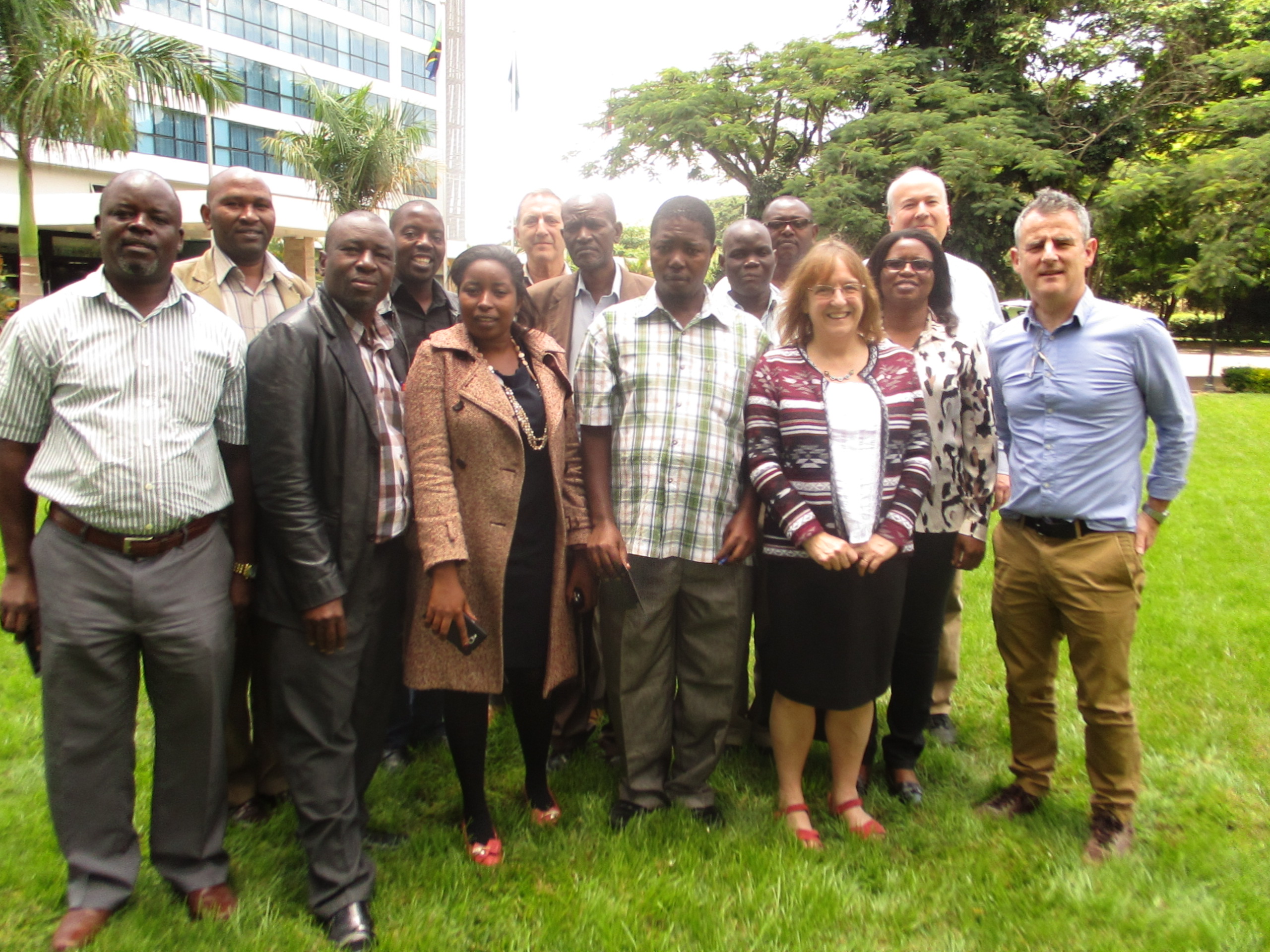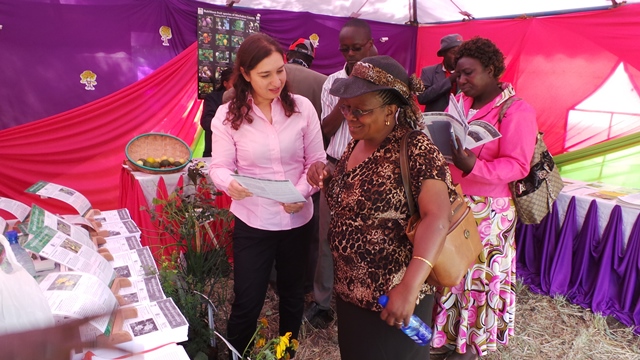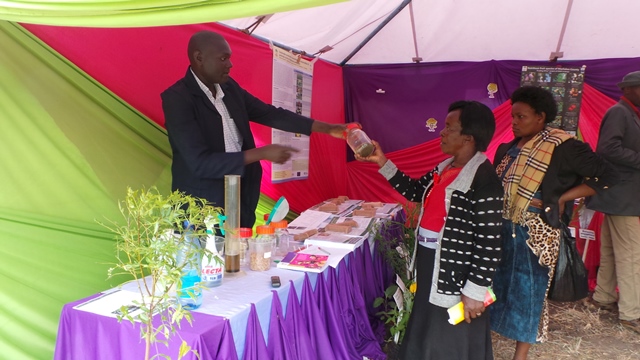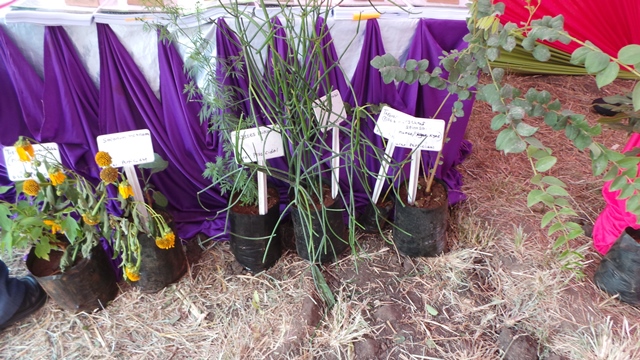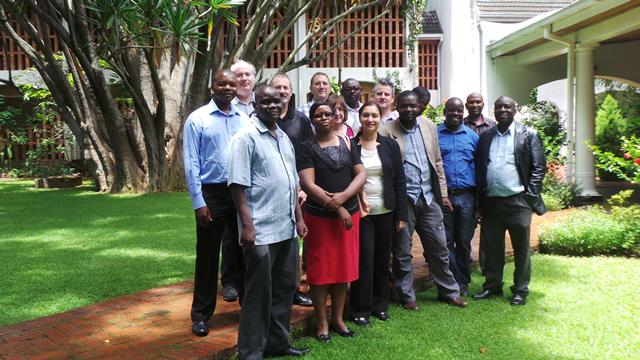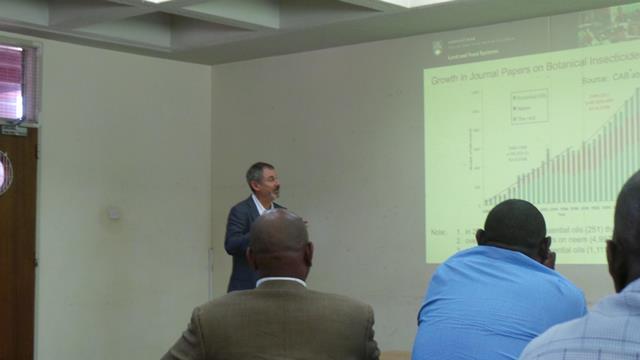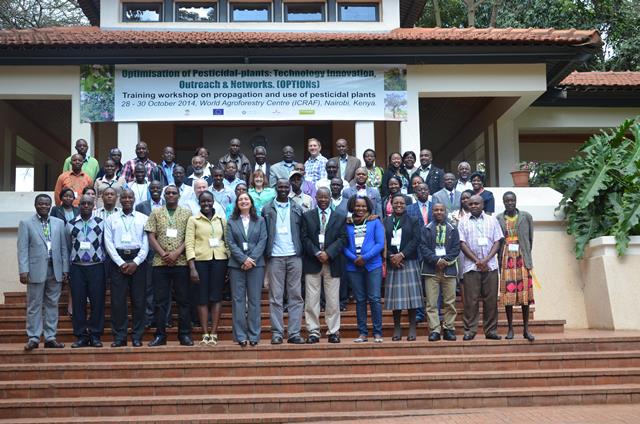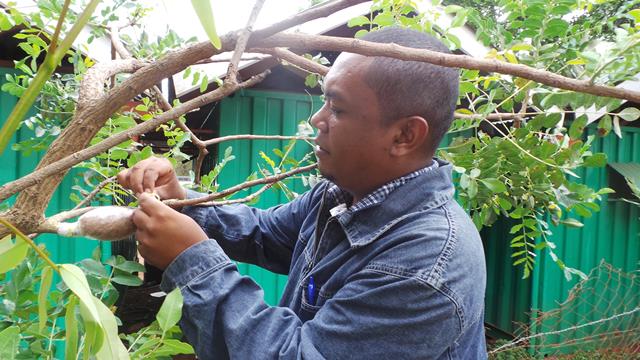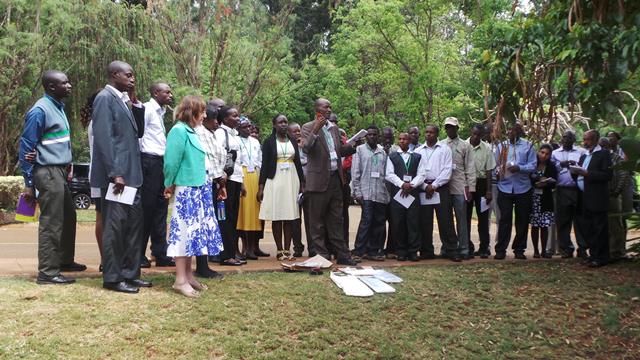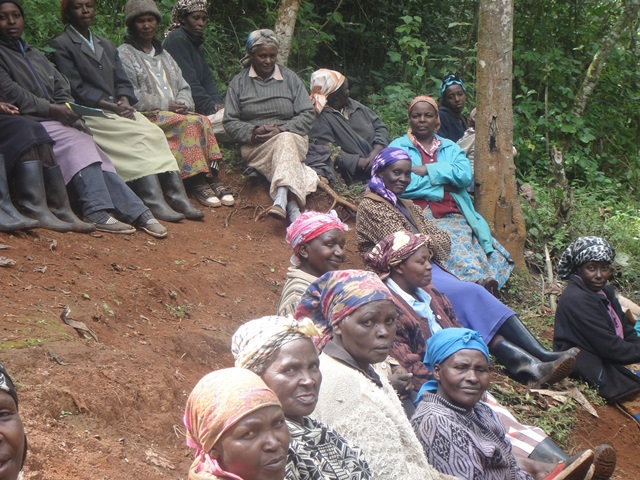What's New
February 2017

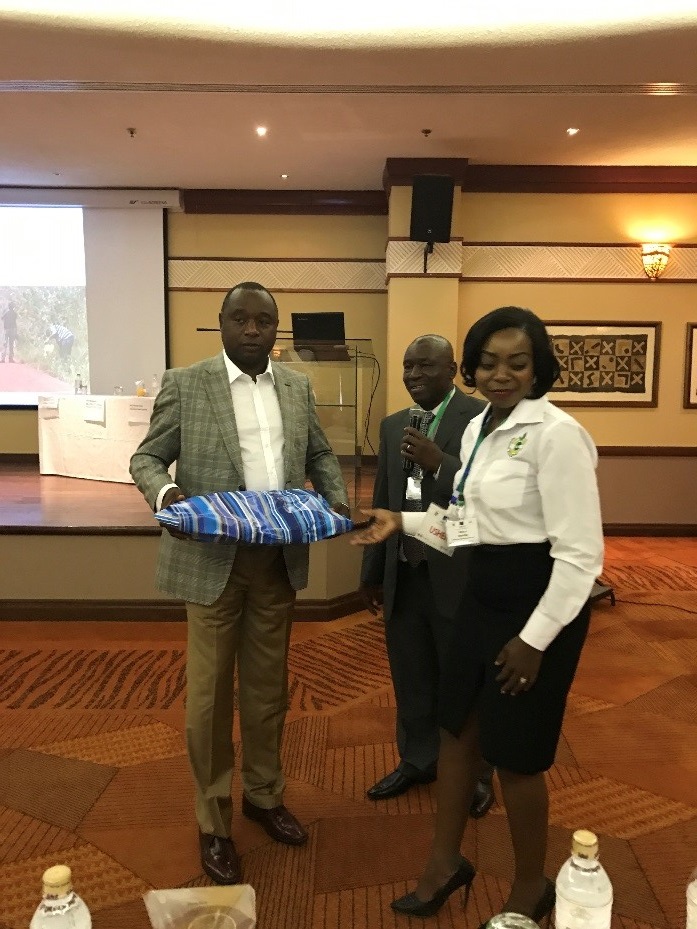
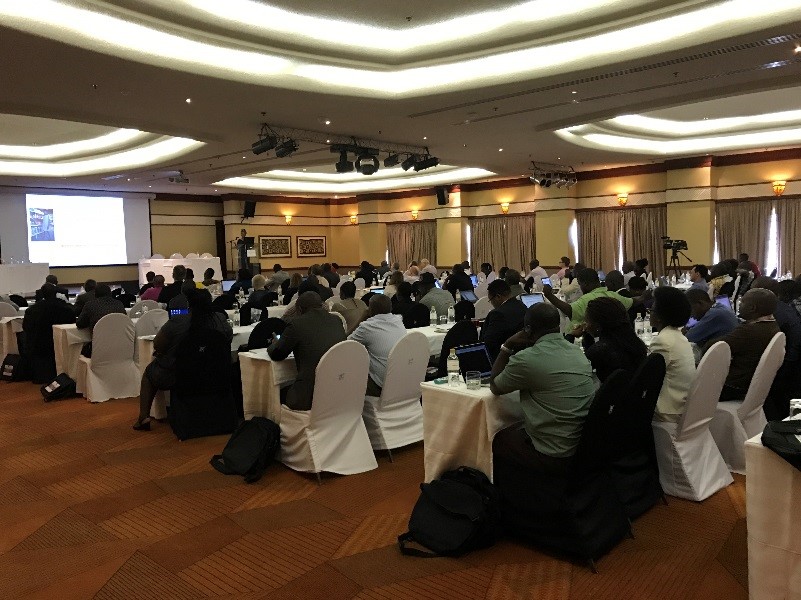
October 2016
OPTIONs team meets for its 3rd annual meeting in Lilongwe, Malawi, hosted by project partner Mzuzu Univeristy. Project progress over the last year and plans for the 2nd International Conference on Pesticidal Plants were discussed.
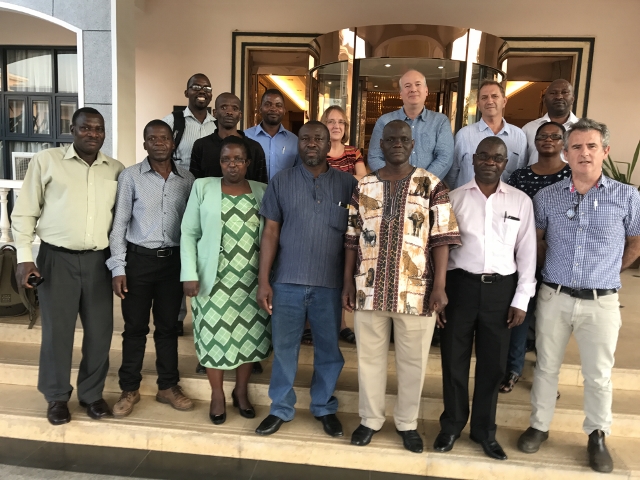
Melia volkensii plants that were planted at Nzouni in Makueni county, Kenya in November 2015. The seedlings were purchased from Makueni OPTIONs farmers.
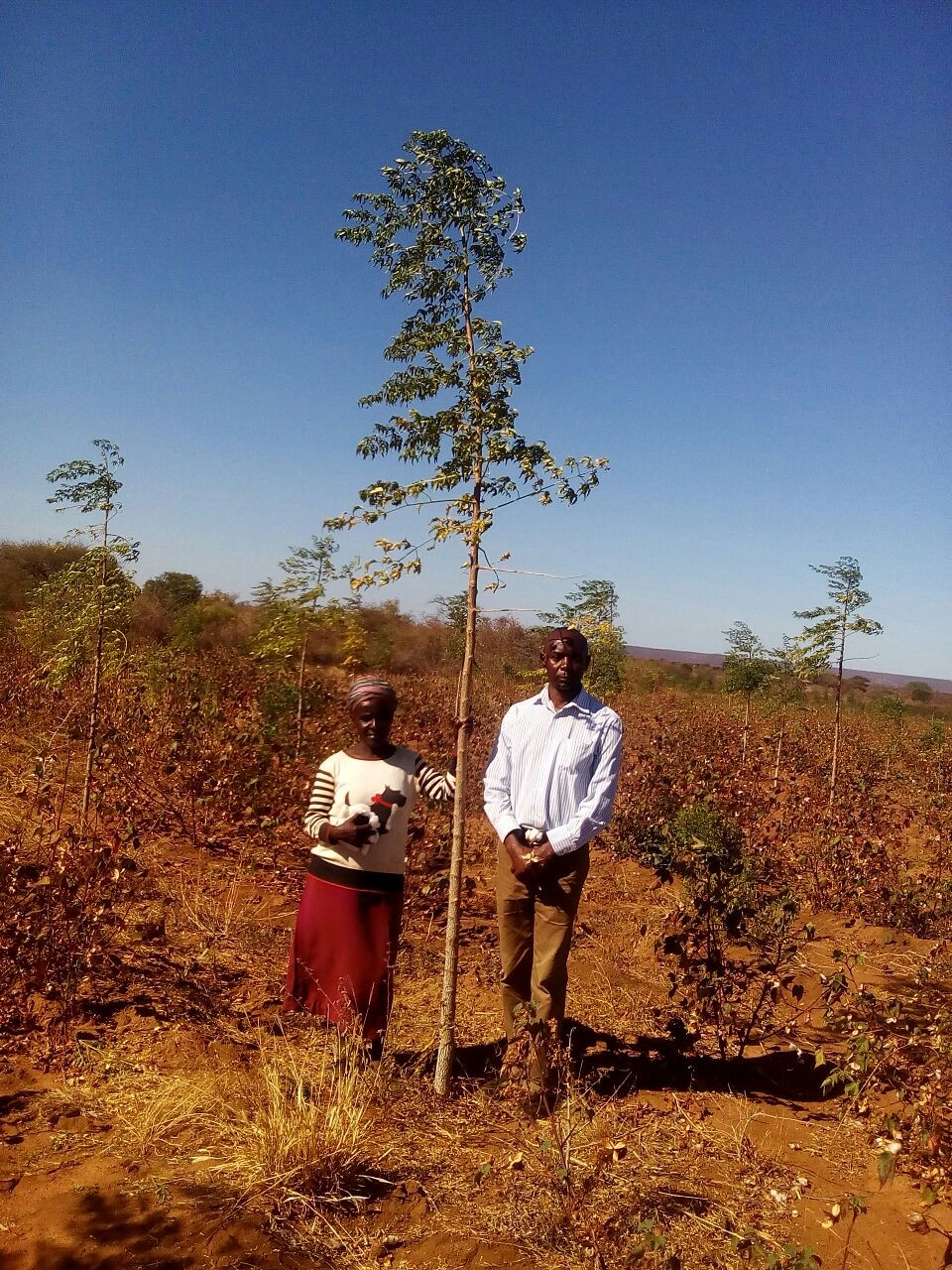
September 2016
Training session for Tharaka farmers by National Museums of Kenya researchers Dr. Patrick Muthoka and Dr. Esther Kioko on propagation, use of pesticidal plants and beneficial/ harmful insect pests.
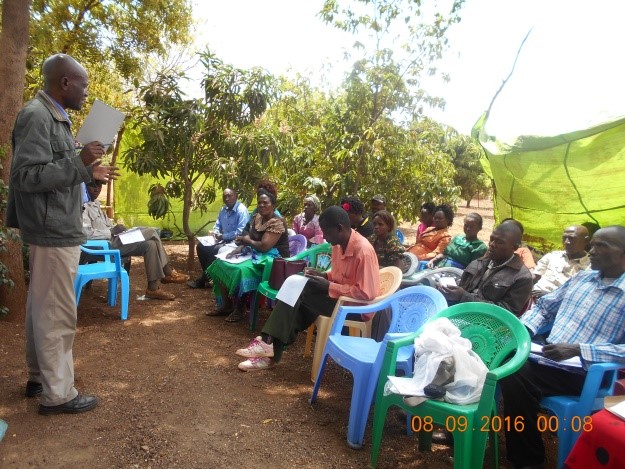
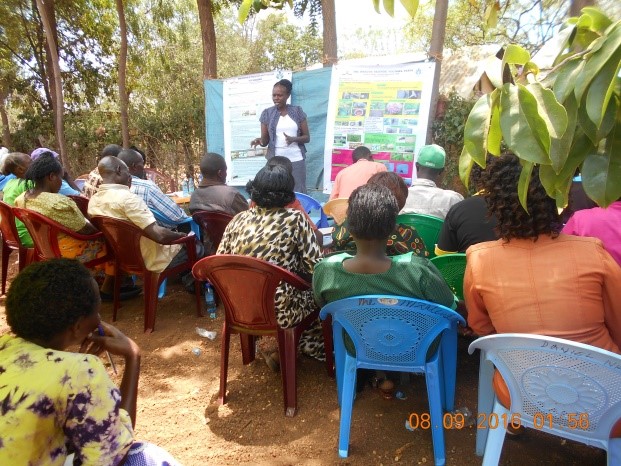
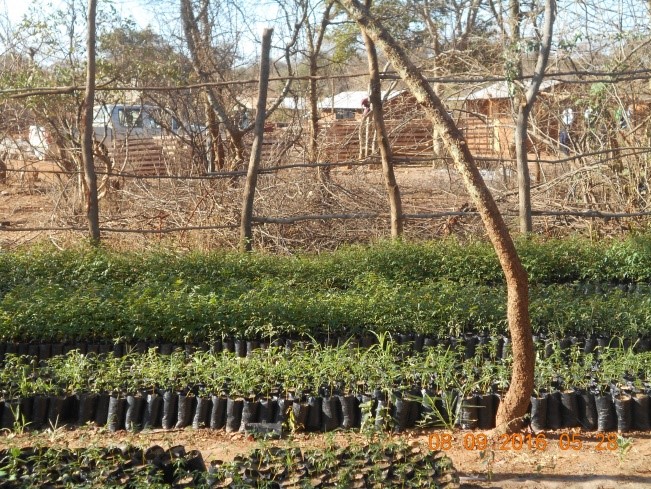
Farmer’s nursery in Tharaka, James Ndatho, nursery with 4,000 Azadirachta indica (neem) and 1,500 Melia volkensii seedlings
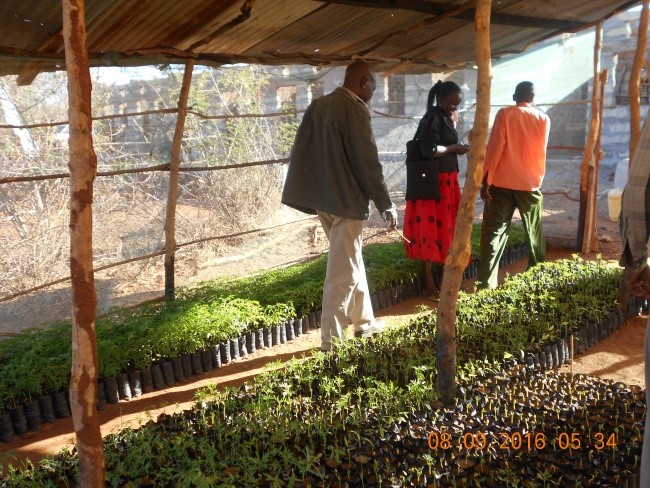
Farmer’s nursery in Tharaka, Samuel Mwiti, nursery with 4,000 Melia volkensii and 200 Tephrosia vogelii seedlings
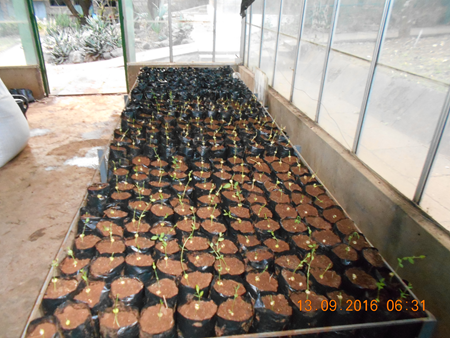
Transplanted Securidacaseedlings at the NMK glasshouse
August 2016
OPTIONs partner National Museums of Kenya helps farmers learn how to propagate Securidaca longepedunculata. Commonly known as the Africa violet tree, Securidaca is one of the best indigenous pesticidal species, but until OPTIONs research it was considered very difficult to propagate.
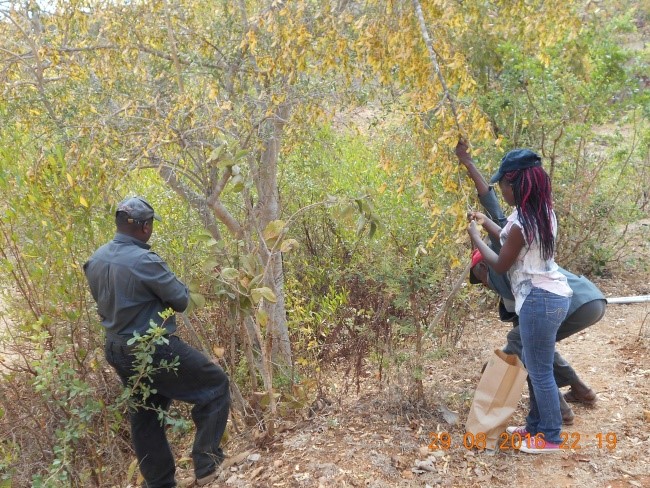
Acquisition of Securidaca longepedunculata fruits at Ngutwa, Makueni County

Securidaca seed processing at Kivani with farmer participation
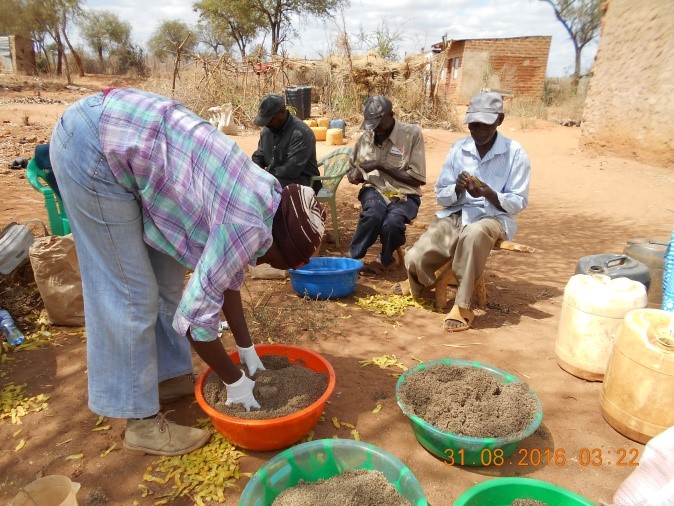
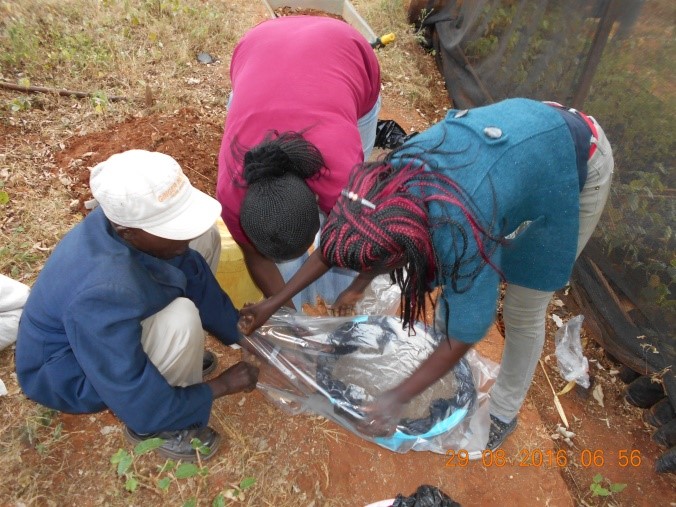
Seed propagation using washing basin enclosed with polythene at Kivani
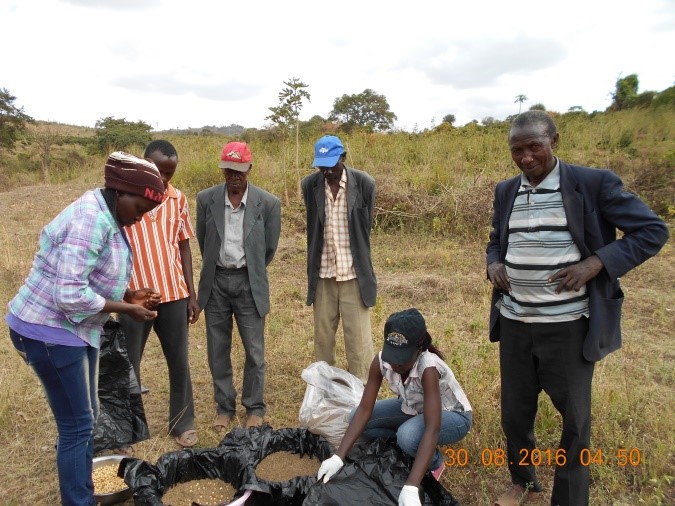
Sowing seeds at Ngutw’a by NMK OPTIONs team. A total of 8,000 seeds were collected and sown with the three farmer groups within Makueni County.
July 2016
OPTIONs partner National Museums of Kenya carries out a series of farmer training events in western Kenya.
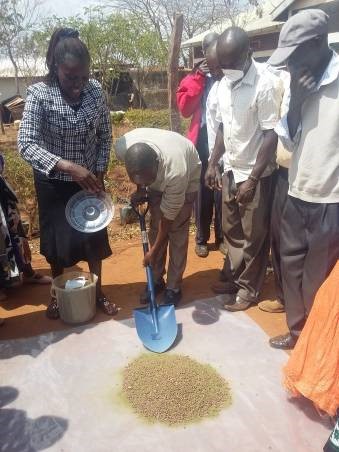
Farmers' training at Kiuuku, Makueni County. Farmers were trained on how to use pesticidal plants. Josephine Kyaa demonstrates to farmers how to mix neem powder with grains before storage.
June 2016
A practical publication is produced by OPTIONs colleagues at the World Agroforestry Centre: Handbook on Pesticidal Plants. The book can be dowloaded from here and can also be found on the ICRAF online library.
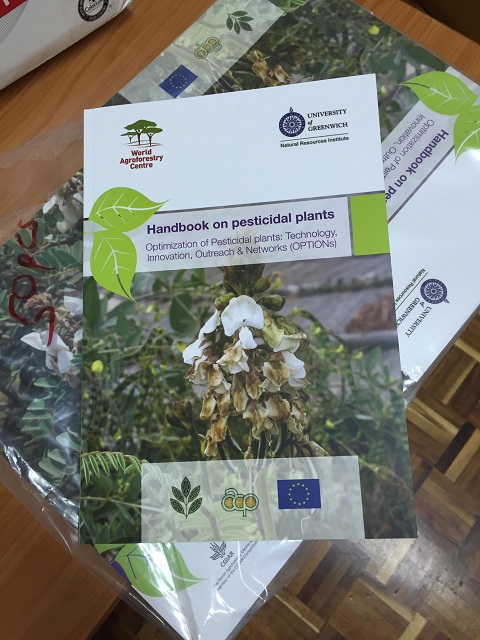
May 2016
A training workshop with more than 60 farmers from Western Kenya took place at the National Museums of Kenya over the 25th and 26th May. Training was provided on how to use pesticidal plants, giving farmers practical hands-on experience in making their own extracts. The event was broadcast on Kenyan national news by TV channel KBC as well as in several newspapers.
Attendees at the How to Use Pesticidal Plants training workshop hosted by the East Africa Herbarium and Department of Entomology at the National Museums of Kenya, Nairobi, 25-26 May 2016

Farmers learning how to make pesticidal plant extracts. Dried powdered plant material is mixed with soapy water and left for 24 hours. The plant material is then removed by filtering through a cloth so that it can be sprayed on field crops.
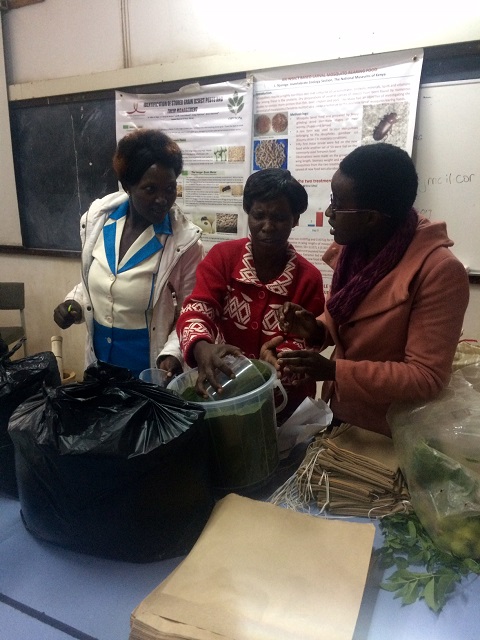
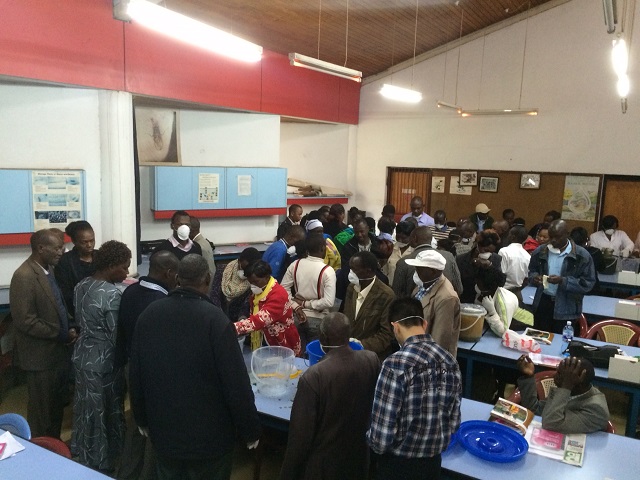
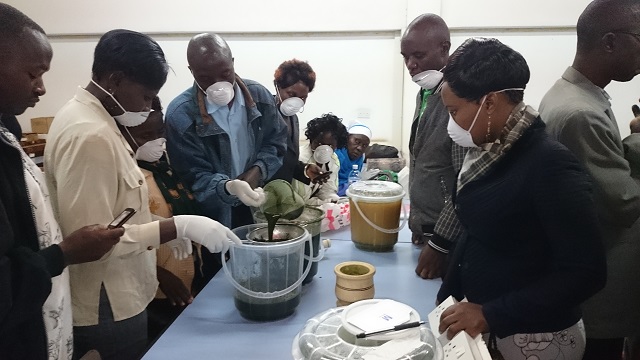
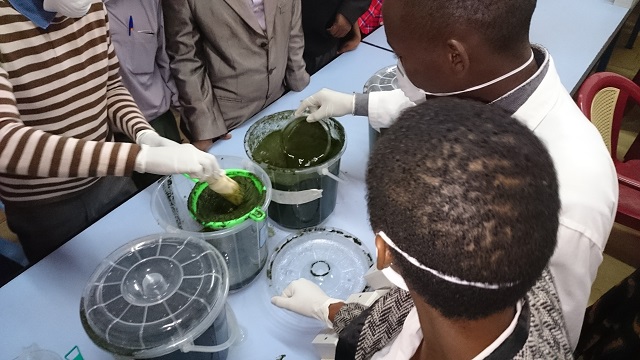
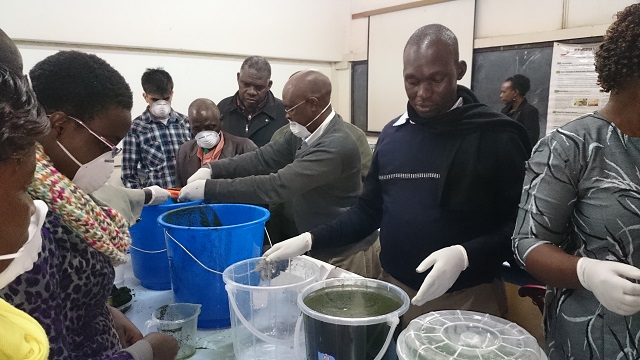
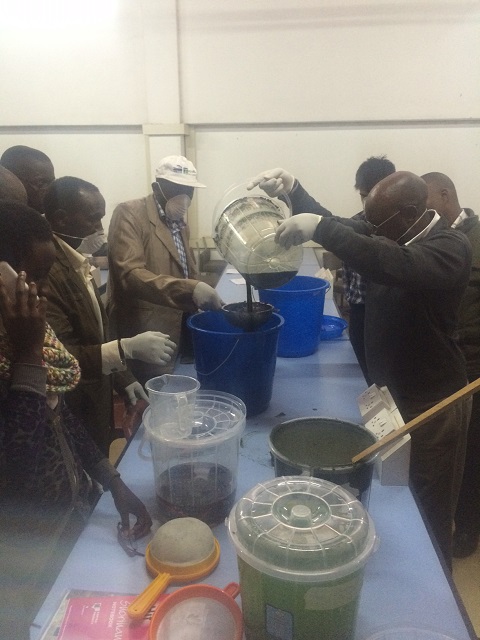
Professor Steven Belmain from the Natural Resources Institute demonstrates to farmers how to solarise grain as a method of disinfesting grain, not only killing adult insects but also egg and larval stages that may be developing inside the grain.
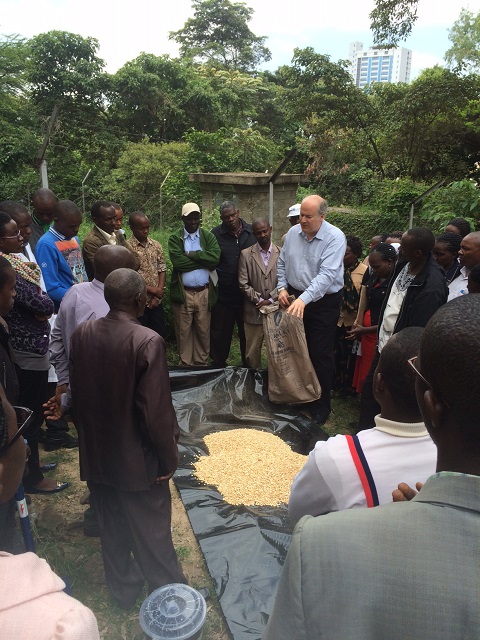
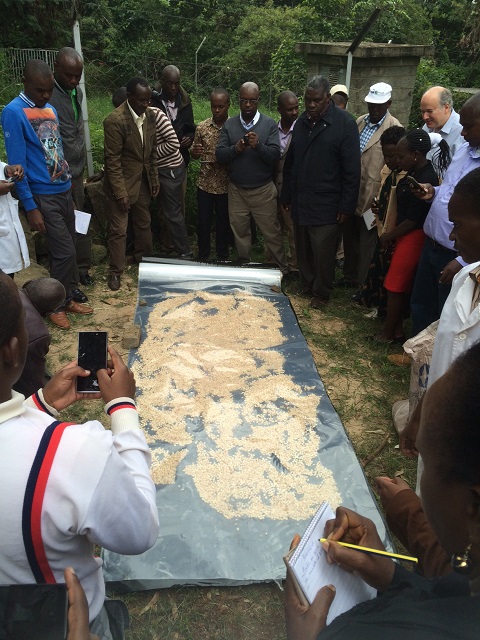
Germplasm of Zanha africana and seed processing at the ex situ plant conservation section of the National Museums of Kenya. Germinating seeds of Zanha africana and potted seedlings at the Nairobi botanic garden nursery.
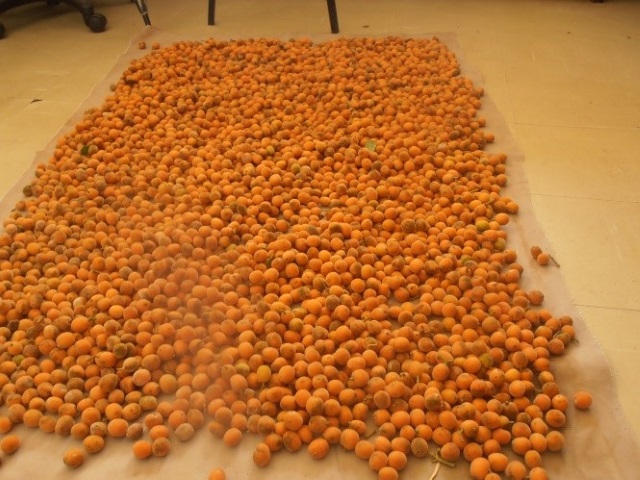
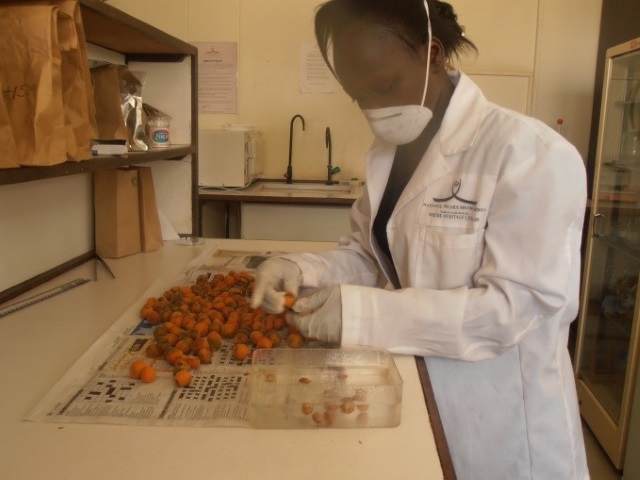
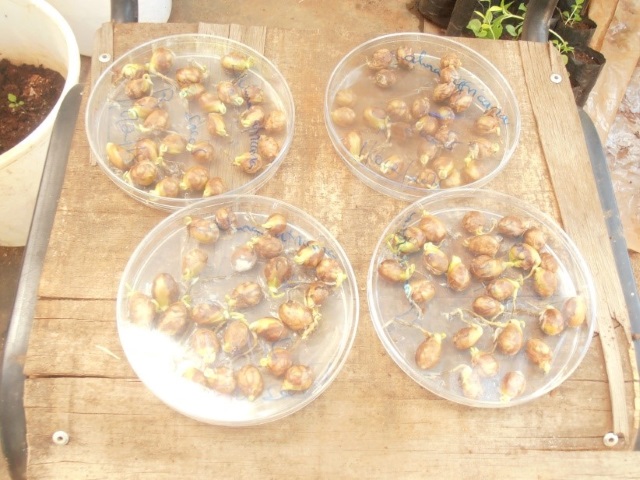
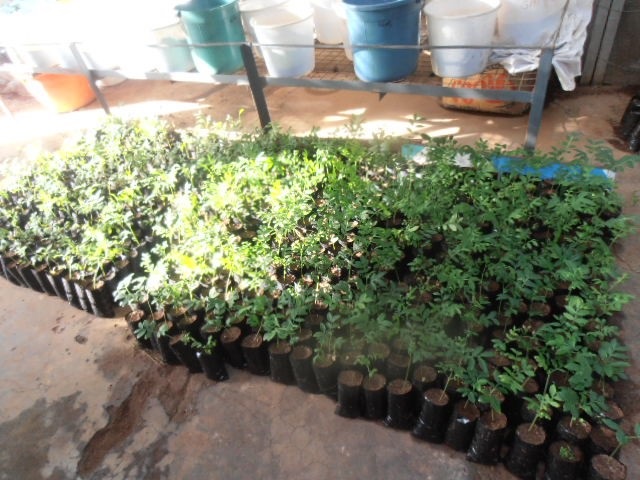
April 2016
Article on growing the pesticial plant Pyrethrum as a cash crop for Kenyan farmers appears in the national newspaper Saturday Nation.
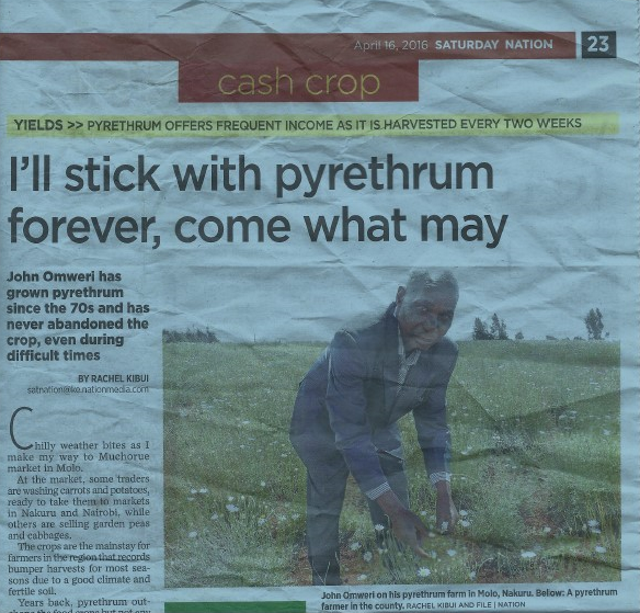
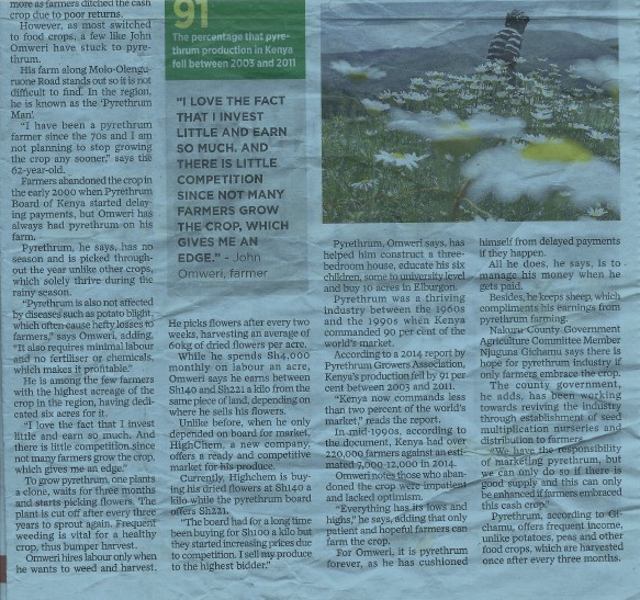
March 2016
Training session for farmers from Tharaka, Kiuuku, Nzouni, Busia, Ngutwa, Kivani and Kaiti at the Kenya Forestry Research Institute Kibwezi providing training on nursery management
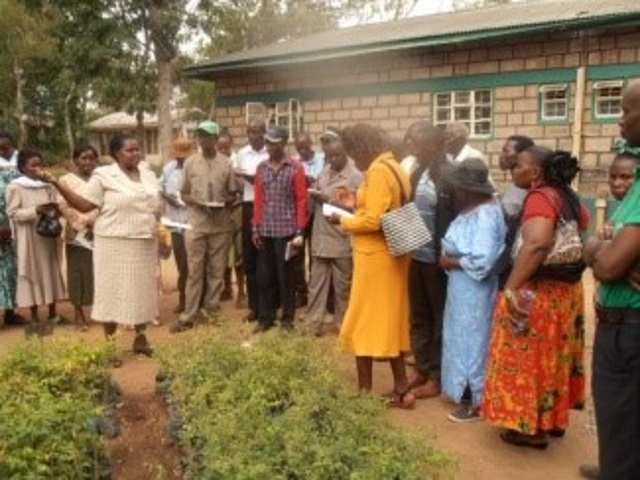
Training session for farmers from Tharaka, Kiuuku, Nzouni, Busia, Ngutwa, Kivani and Kaiti at Mr. Kituku’s Melia volkensii plantation in Kibwezi. Mr Kituku has planted over 18,000 seedlings of Melia volkensii for timber. He also uses leaves of Melia volkensii as a mulch against termites. The training was organized by OPTIONs partner National Museums of Kenya with Sustainable Global Gardens as participants.
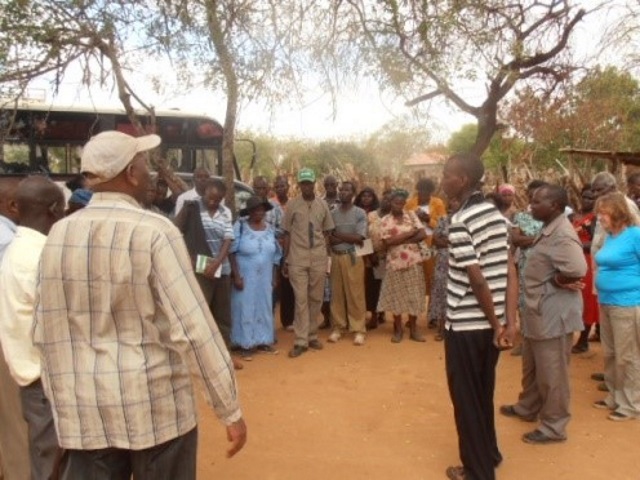
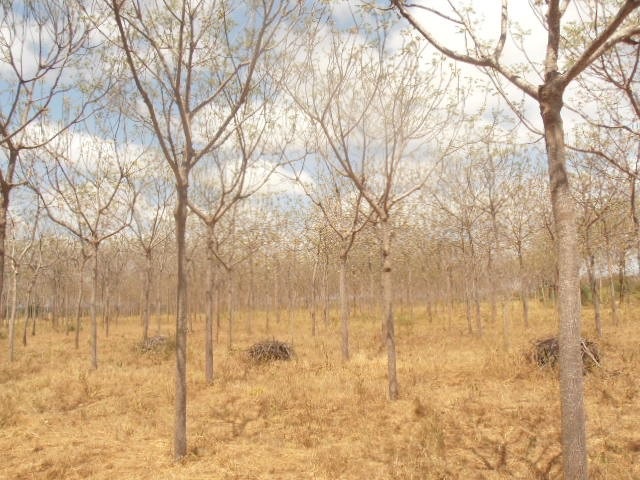
National Museums of Kenya and Sustainable Global Gardens staff at Ngutwa in Makueni County assessing a population of Zanha africana for future seed collection on 21st March 2016

MSc student Mr. Collins Masinde at Ngutwa in Makueni County assessing planted Lippia javanica on-farm on 21st March 2016
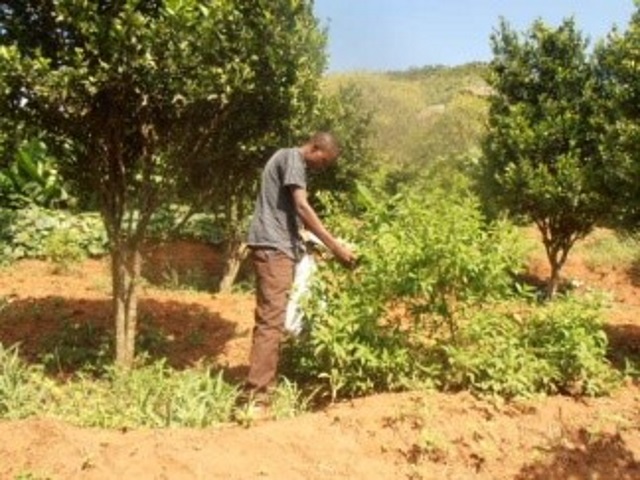
February 2016
OPTIONs team members hold their 2nd annual project review meeting in Arusha, Tanzania.
December 2015
New OPTIONs-supported research published in the open-access journal PLoS ONE is highlighted in an NRI press release
The full publication can be found here: Mkenda, P., Mwanauta, R., Stevenson, P. C., Ndakidemi, P., Mtei, K., and Belmain, S. R. (2015). Extracts from field margin weeds provide economically viable and environmentally benign pest control compared to synthetic pesticides. Plos ONE. 10(11), e0143530. (full text pdf)
A new leaflet published by the Alliance for Food Sovereignty in Africa provides practical advice on Using Pesticidal Plants for Pest Management in Africa. And in French. The leaflet is one of several agroecology case studies that AFSA has produced with support from the AgroEcology Fund.
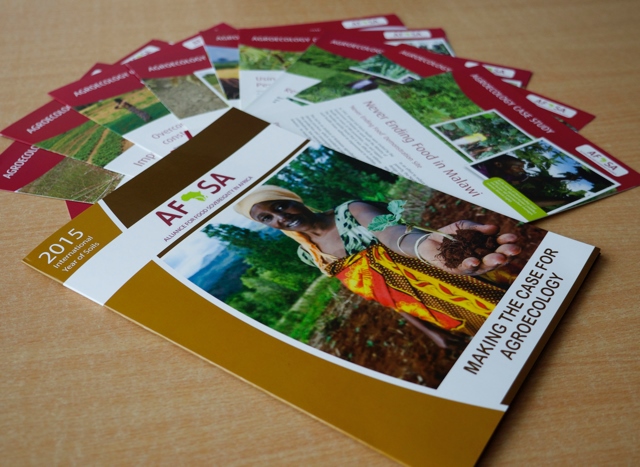
November 2015
OPTIONs partner Sustainable Global Gardens has been busy demonstrating the use of pesticidal plants with farmers and schools in western Kenya. Through such outreach, the pesticidal plant Tephrosia vogelii has been planted widely through developing local nurseries and tree planting schemes. As an indigenous tree, Tephrosia helps improve the soil through its roots fixing nitrogen and mining minerals. Extracts made from the leaves can be used to control insects on most crops. Many schools are involved in planting the neem tree, Azadirachta indica, in their school yards.
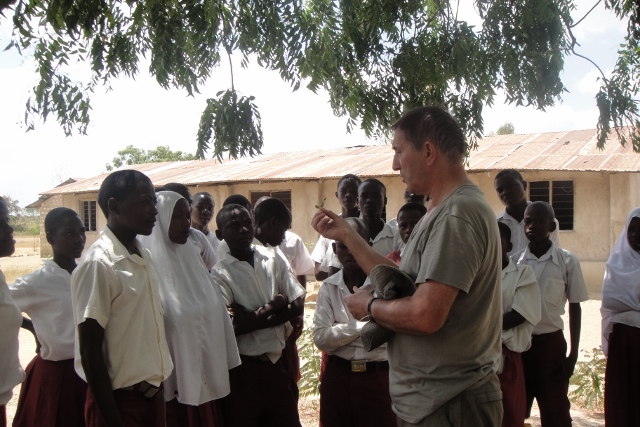
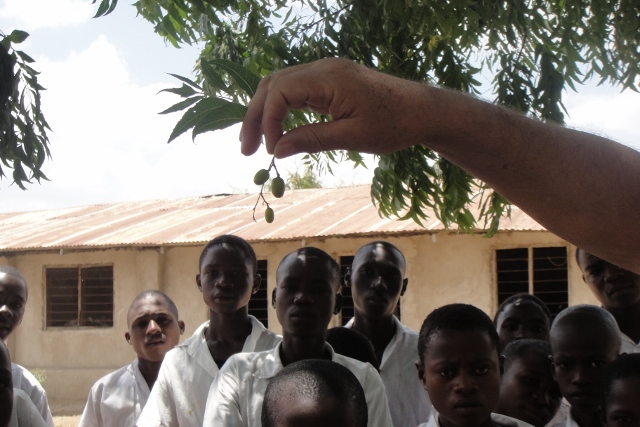
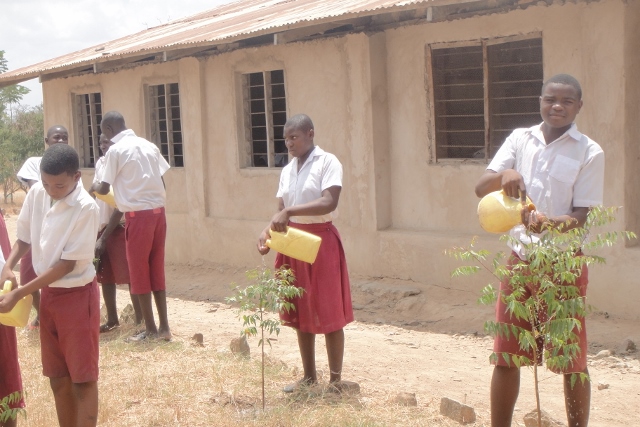
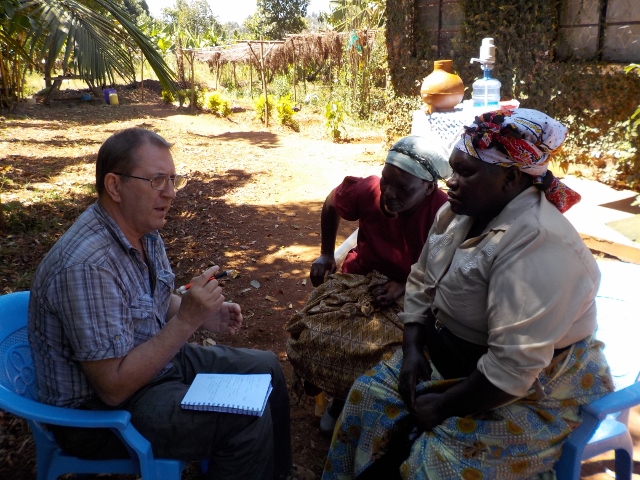
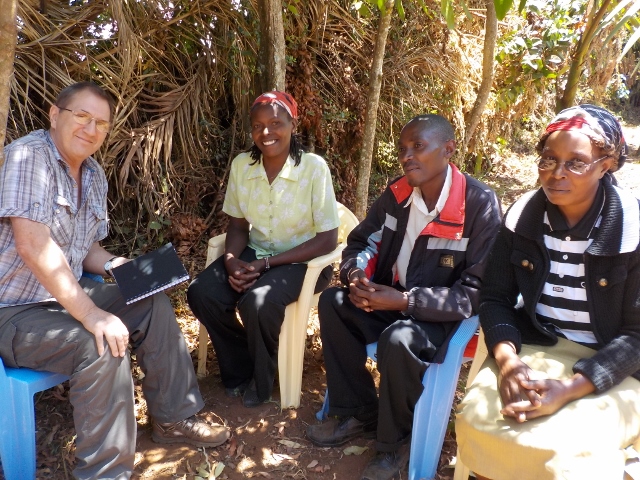
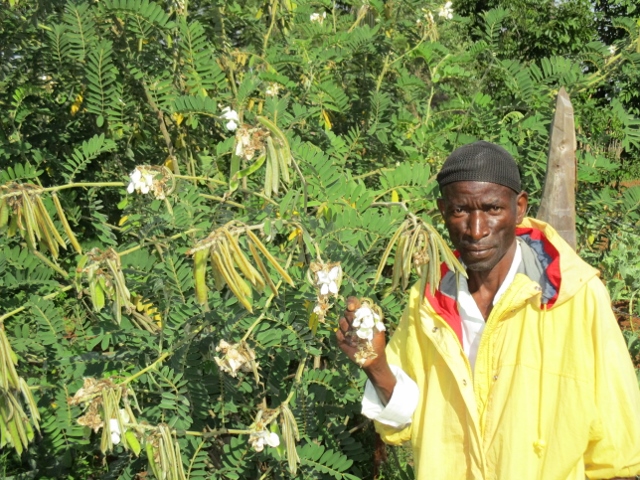
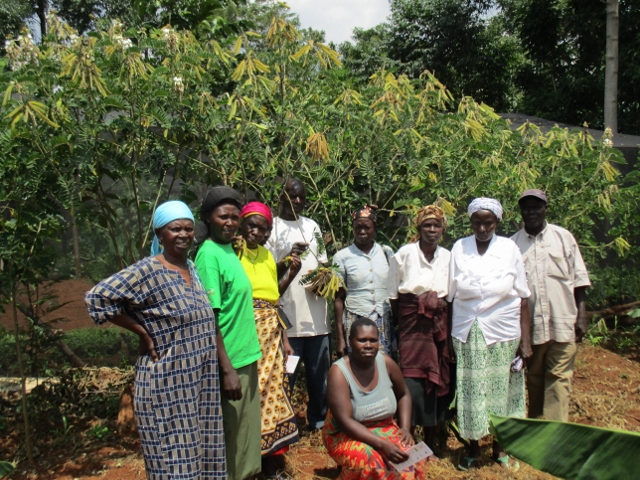
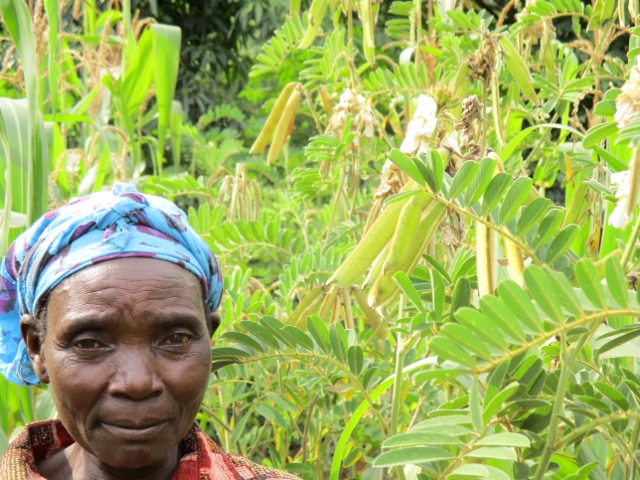
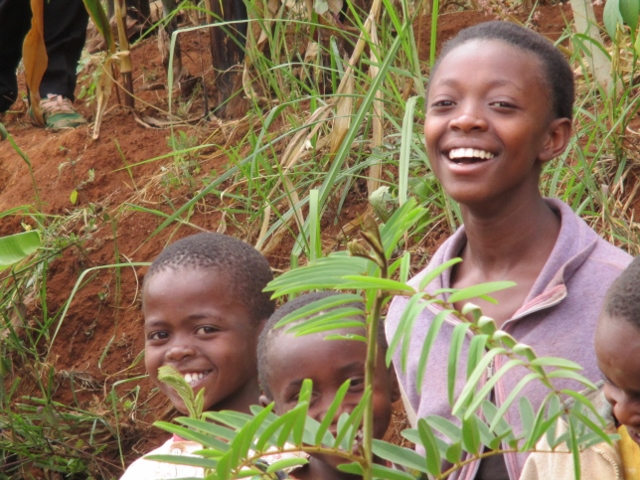
October 2015
Research staff from the East Africa Herbarium of the National Museums of Kenya have been demonstrating how to grow indigenous tree species in some of the more arid parts of western Kenya working with local communities, schools and nursery growers in Thakara, Kenya. The Herbarium team has also recently published a leaflet on the propagation of Securidaca longepedunculata, one of the target indigenous, slow-growing, recalcitrant species of the OPTIONs project.

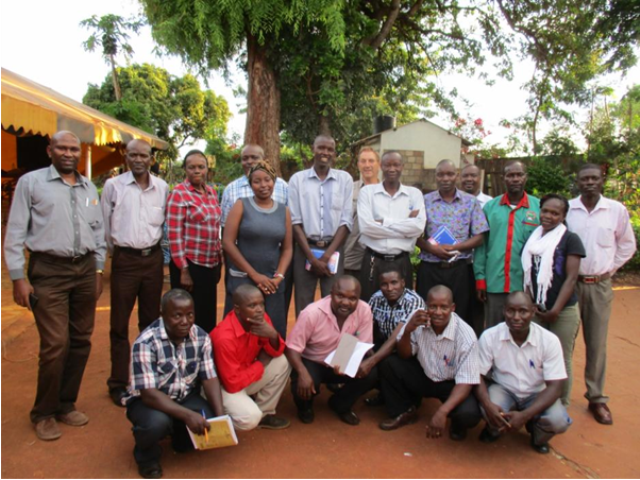
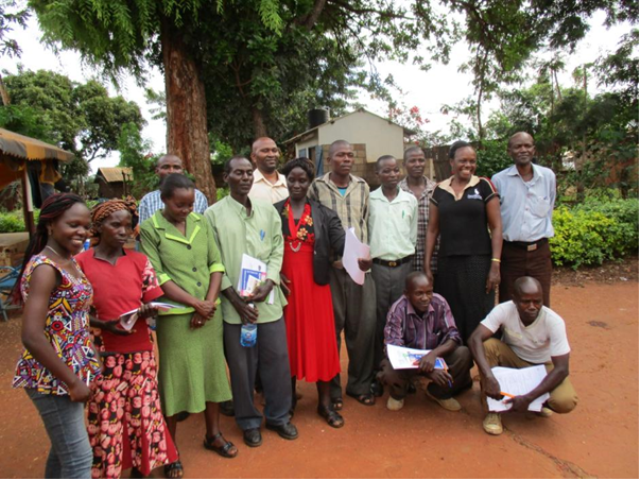
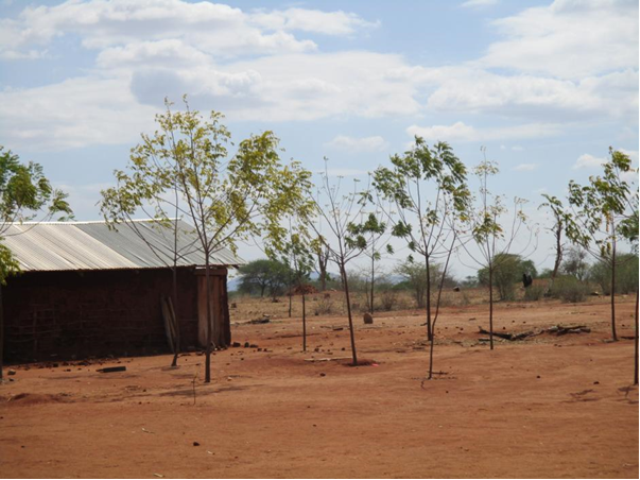
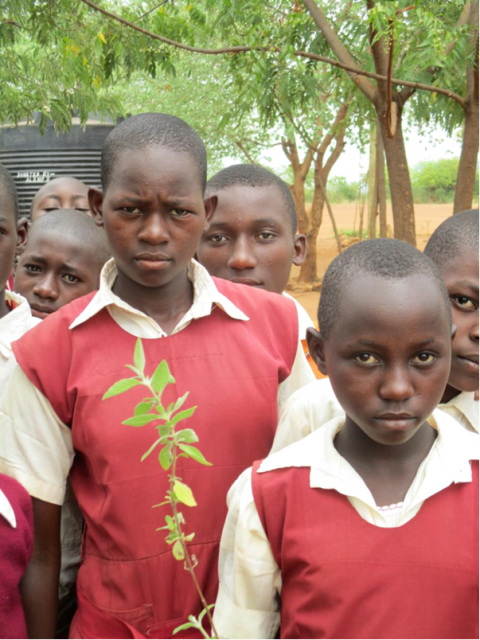
September 2015
OPTIONs project partner ICRAF publishes the Proceedings of a training workshop at the World Agroforestry Centre, Nairobi, Kenya, 28-30 October 2014.
ICRAF participates in a farmers’ field day in Machakos, Kenya. Over 1000 farmers attended and visited OPTIONs demonstration booth that provided training on the preparation, application and use of pesticidal plants as well as demonstrations on propagation. Farmers from Machakos were very interested in being educated on pesticidal plants to protect their stored grains and crops. Some farmers had used pesticidal plants before but the majority had not previously used them. Demonstrations in Swahili from ICRAF staff Valentine Gitonga (propagation) and Daisy Chepkoech (preparation) proved to be one the more popular stands at the field day.
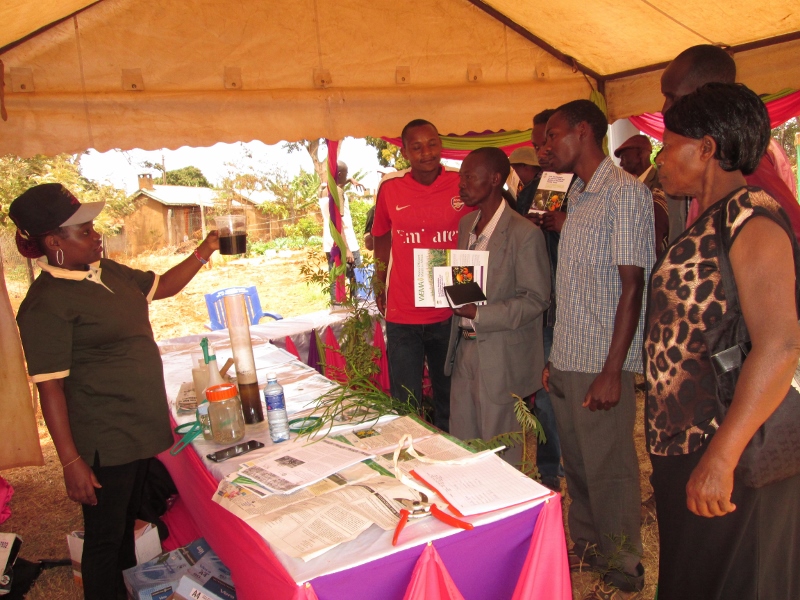
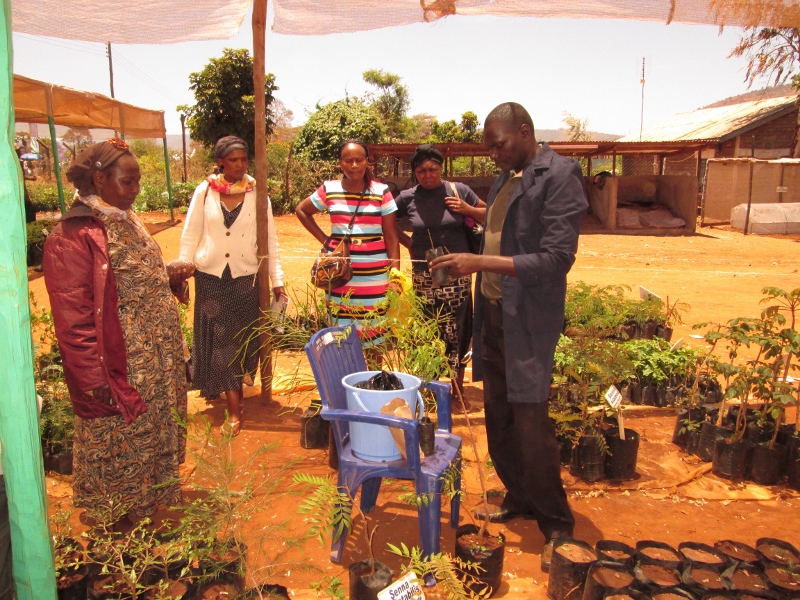
July 2015
New leaflet highlighting OPTIONs activities and partners in Kenya: OPTIONs partnership encourages farmers to grow and use natural pesticidal plants, rather than synthetic chemicals for pest control
June 2015
The OPTIONs project and pesticidal plants was showcased at the Machakos Agricultural show between 24th and 28th June 2015 in Kenya. OPTIONs partner ICRAF was privileged to participate and to have a stand at the show, hosted by the Kenyan Ministry of Agriculture. At the stand, the OPTIONs project was prominently displayed. Participants and visitors were taught about pesticidal plants and how they can be used to protect stored grains and field crops. Demonstrations on how to prepare and use pesticidal plants were performed. Several species of pesticidal plants which had been propagated at ICRAF were shown to participants and information was shared on how to grow the species. Participants were also given leaflets on pesticidal plants. Visitors were particularly interested in the preparation of the plants for use on field crops. They mentioned that pests were a main problem in achieving food security in the region and acquiring synthetic pesticides was a financial challenge for many of them.
More than 640 participants recorded their name and interest in the OPTIONs stand. Out of these participants, more than 250 of them were female. More than 130 of them were linked to a nursery, more than 150 were linked to a farmer group and 83 participants mentioned that they had used pesticidal plants before. Participants came from various backgrounds; more than 440 were farmers from the Machakos region and from farmers groups all over Kenya, more than 130 were from educational institutions (teachers, students, scientists), some were from the various government ministries and institutions (Ministry of Agriculture, Ministry of Livestock), some were from private companies (Agrovets, fruit sellers, businessmen, pharmaceutical companies), from religious institutions and from CBOs.
More than 2900 fact sheets on pesticidal plants were distributed to participants who expressed interest. Many of the participants expressed the need for further training on pesticidal plants to reach their communities which were faced with pest problems and post-harvest losses due to pests. Some participants returned to the stand with their fellow farmers on subsequent days for information sharing and training at the stand.
Dr Parveen Anjarwalla from the World Agroforestry Centre (ICRAF) holding a leaflet about pestical plants and explaining how to use for crop protection to one of many farmers attending the Machakos Agricultural show
Farmers in Kenya are very excited about being able to use plants which are already on their farms to protect their field crops and stored grains. They want to learn more about what else they can grow to protect their crops and aid in food security in the rural areas. They want us to bring this innovative technology to their farms.

An example of the steps involved in the process of using pesticidal plants to protect stored cowpeas.
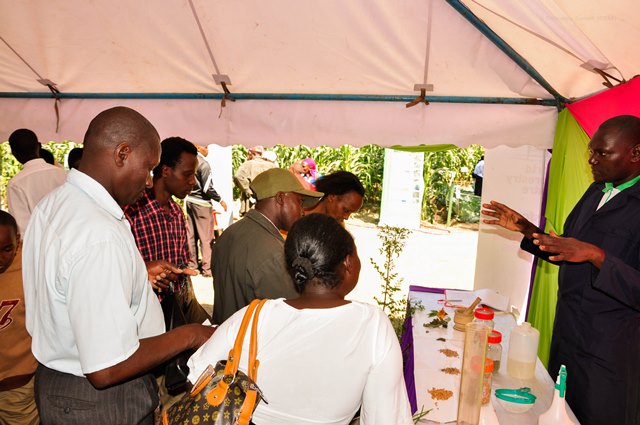
Valentine Gitonga from ICRAF explains to farmers how to use pesticidal plants for pre- and post-harvest crop protection.
Examples of some of the plants that can be used for pesticides which were displayed at the Machakos Agricultural show
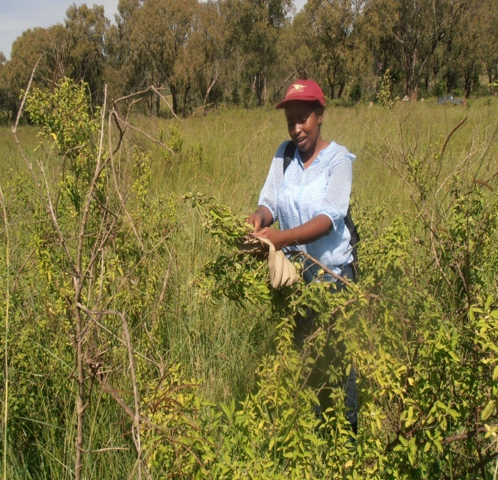
Research Assistant Ms. Vivian Kathambi from the National Museums of Kenya collecting Lippia javanica
May 2015
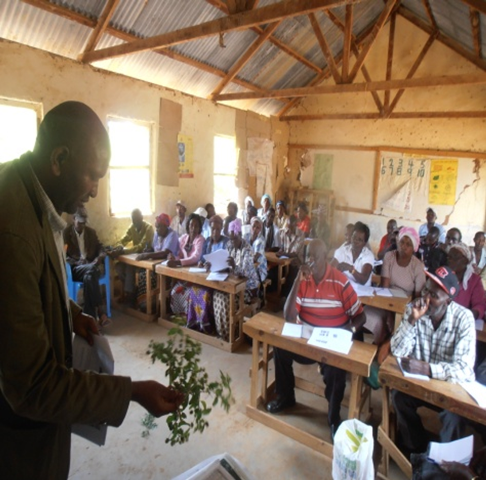
Dr. Itambo Malombe, a taxonomist from the National Museums of Kenya, at a training session on species identification at Kivani in Makueni community, Kenya training workshop

Dr. Patrick Muthoka, a plant and seed physiologist from the National Museums of Kenya, at a training session on seed propagation and seed handling Nguma ya Ngutwa, Kenya
April 2015
New article appearing on the ENSIA web magazine, Could traditional plants hold the secret to saving crops from pests? Researchers build on age-old practices to reduce food loss in Africa.
February 2015
The first annual meeting of the OPTIONs project took place in Harare, Zimbabwe, from the 2nd to 4th February, hosted by the University of Zimbabwe (download Minutes of the meeting). The team reviewed progress over the past year and developed detailed plans for the next two years. Of particular note, it was announced that the 2nd International Conference on Pesticidal Plants will be hosted by the University of Zimbabwe to take place in the town of Victoria Falls, Zimbabwe in early 2017. More details about the ICPP2 and a 1st circular announcement will be out soon.
During the meeting, Professor Murray Isman from the University of British Columbia gave a keynote seminar titled A global view of the development and use of botanical insectcides.
Professor Phil Stevenson from the Royal Botanic Gardens Kew and Natural Resources Institute then followed with a workshop on How to write scientific publications.
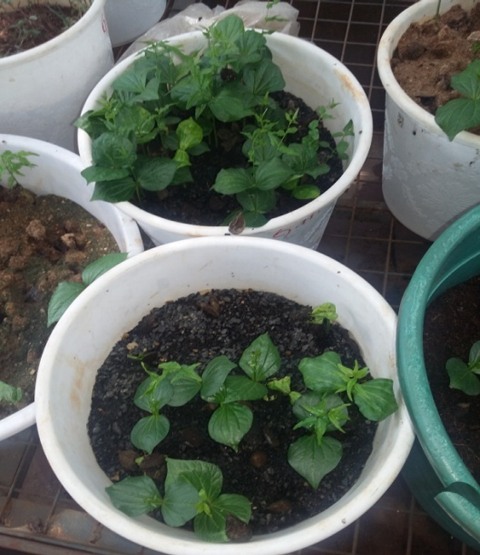
Germination of Strychnos spinosa at the Nairobi botanic garden glasshouse
January 2015
OPTIONs pesticidal tree planting initiative is profiled in a newsletter from Sustainable Global Gardens
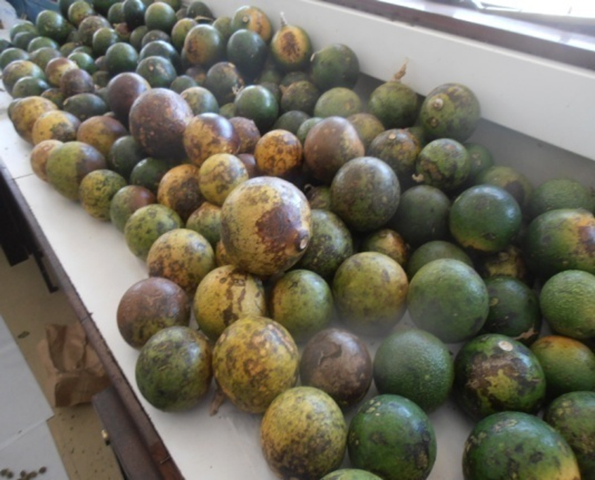
Collected fruits of Strychnos spinosa
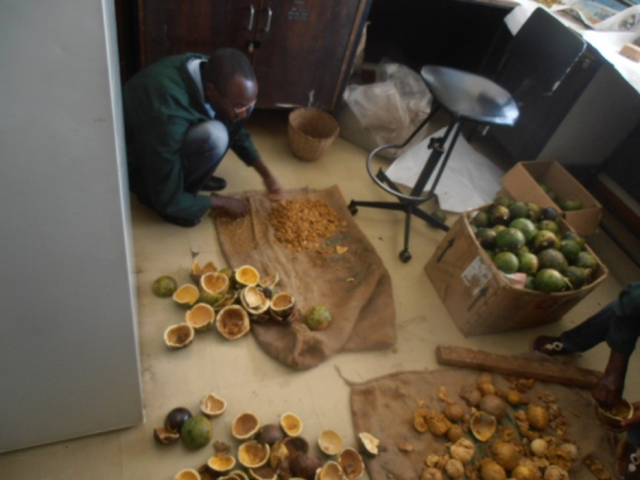
Seed processing of Strychnos spinosa in the National Museums of Kenya
December 2014
An article about the OPTIONs workshop in October (see below) is published in The Ismaili Magazine: Pesticidal plants to protect crops and grains
Zimbabwe holds a national stakeholder workshop at Mandel Training Centre, Marlborough, Harare, Zimbabwe. More than 40 participants from universities, government, NGOs, private sector and farmers attended to discuss national priorities and how best to deliver OPTIONs activities.
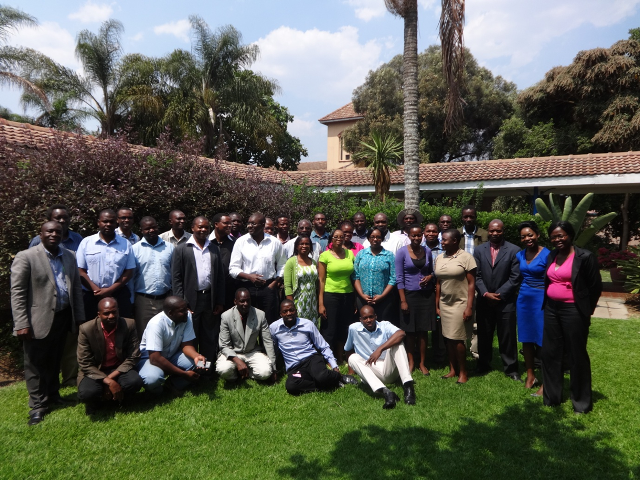
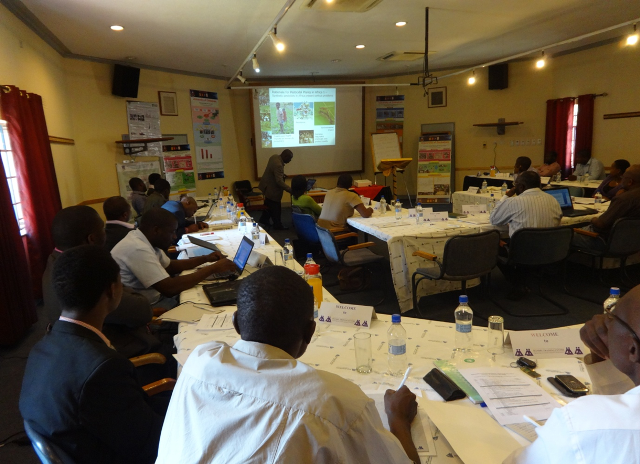
November 2014
CIFOR's Forest News highlights OPTIONs team member Dr Phosiso Sola's work on understanding policy issues in an article titled: In fight against African pests, researchers point to natural-born killers
Farmers in West Kenya have planted their pesticidal tree species on their land and are looking after them. Because Tephrosia vogelii helps improve the soil by fixing nitrogen, with its deep roots bringing up nutrients to the surface, farmers are intercropping Tephrosia with their maize to help improve their crop yields. When the Tephrosia plants are larger the farmers will be able to harvest the leaves to make pesicides and collect the seeds to increase their future propagation of Tephrosia.
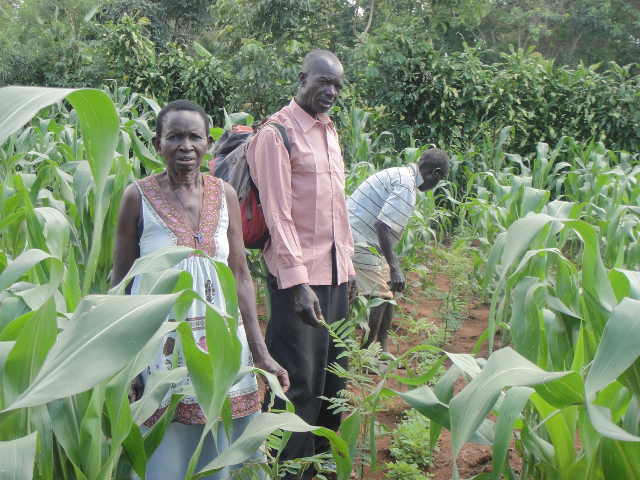
October 2014
A training workshop on how to use and propagate pesticidal plants was held at the World Agroforestry Centre. Approximately 50 people attended ranging from farmers and farmer organisations, NGOs, companies, charities and nursery growers coming from Kenya, Tanzania, Madagascar, Uganda and Mozambique. Many attendees were supported by the Aga Khan Development Network, which is supporting agroforestry projects across Africa and thus synergises with OPTIONs actions to encourage farmers and nursery growers to plant more indigenous pesticidal tree species (instead of invasive species). The main presentations made at the workshop appear on our Publications page.
September 2014
Efforts are under way in Malawi to propagate Pyrethrum, Tanacetum cinerariifolium, and increase its potential as a cash crop in northern Malawi. Mzuzu University is currently developing a seed propagation nursery in order to increase the supply of seed material in the country that can be distributed to farmers. As one of the best known pesticidal plants, Pyrethrum could be widely used both for the production of organic produce for export as well as to help local farmers protect their crops from pests more cheaply than if resorting to commercial synthetics.
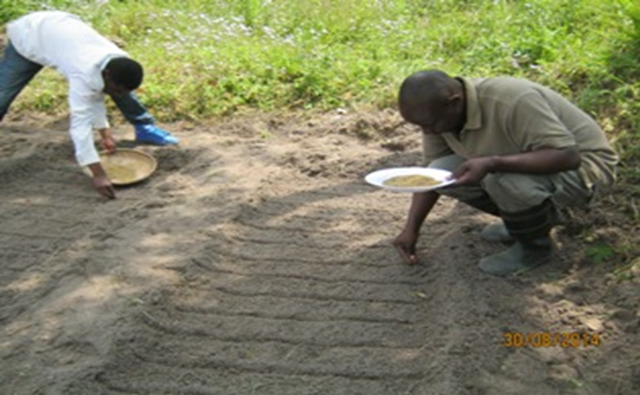
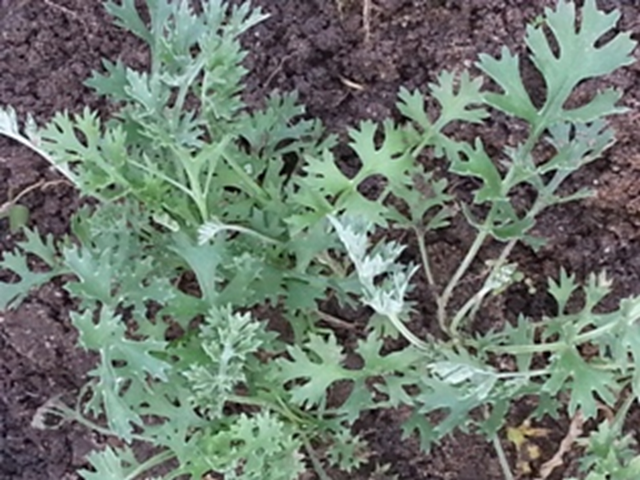
August 2014
In order to increase supply of pesticidal plant materials as well as encourage forestation programmes to use indigenous species, farmers in West Kenya receive pesticidal tree species such as Tephrosia vogelii.
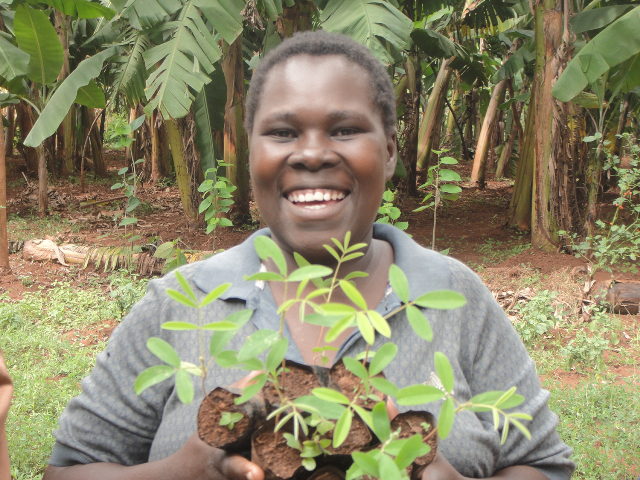
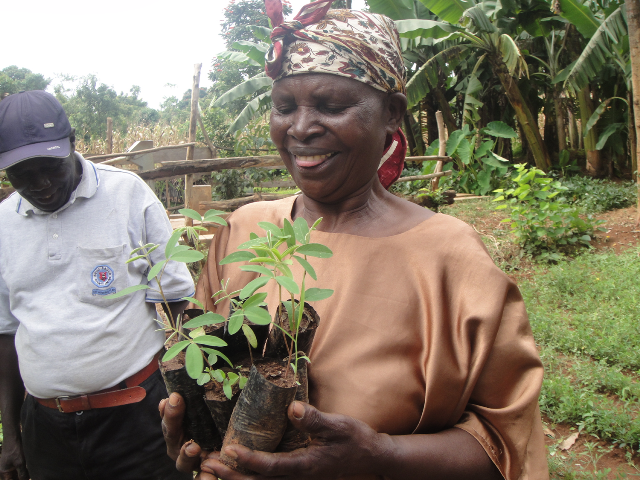
July 2014
The Maendeleo Mashinani Organisation in Busia, western Kenya acted as a pilot group and were the first farmer group to sow seeds in June. By late July the Tephrosia vogelii in the Abakhaywa Women’s Group nursery was ready for transplantation.
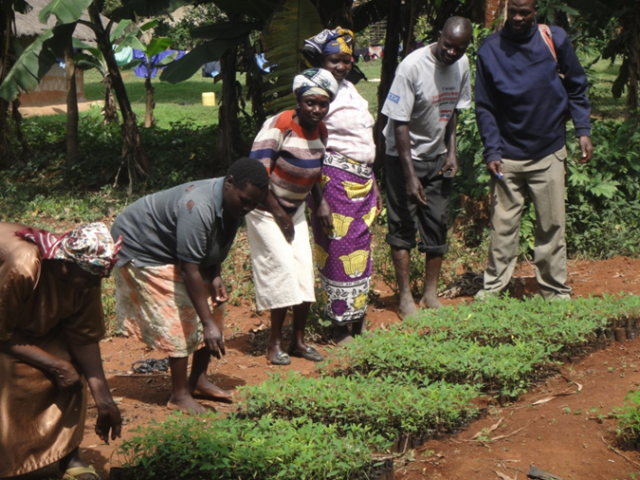
June 2014
Baseline surveys were carried out in a number of communities. Three individuals from each of 42 member groups answered questions concerning what pest problems they had and what methods they used to reduce pest damage. What these baseline surveys established is that the majority of farmers here had limited knowledge of pesticidal plants. Most relied on traditional non-plant methods [eg. smoke, ash, dung] or synthetic chemicals. Generally there was much criticism of such chemicals, but most farmers felt forced into using them. There seems to be many who would use pesticidal plants, if they had more training and appropriate information.
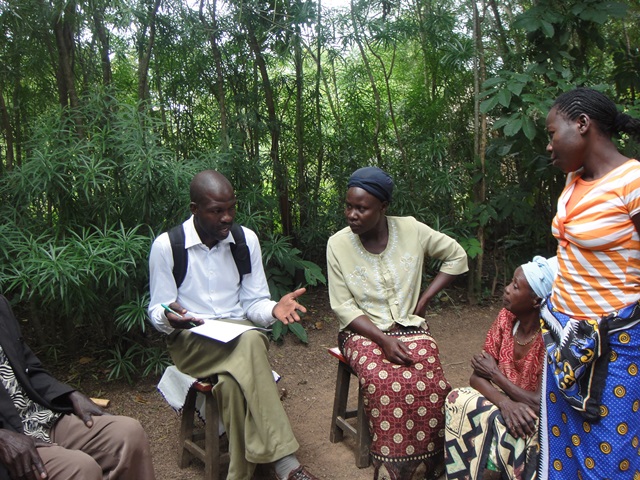
May 2014
Training workshops on how to make seed beds take place in several communities in West Kenya
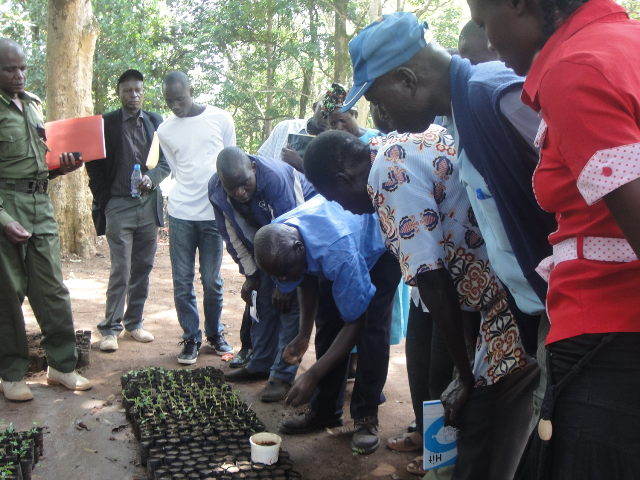
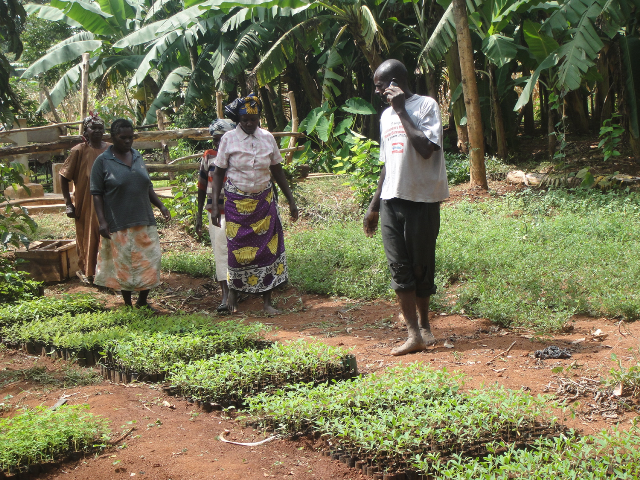
April 2014
Trials to discover how to propagate recalitrant pesticidal tree species such as Securidaca longepedunculata, are under way at the East Africa Herbarium, National Museums of Kenya. Different soil types and seed treatment methods are used to help understand what conditions are best to encourage high levels of seed germination.
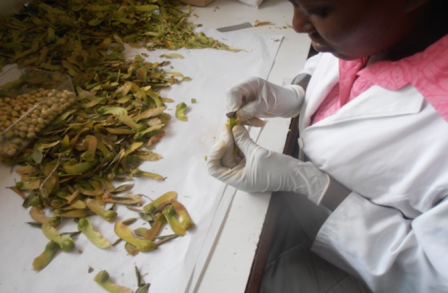
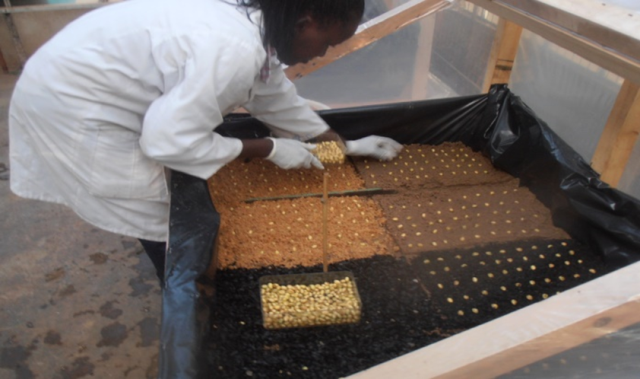
February 2014
OPTIONs project team holds it inception workshop at the World Agroforestry Centre, Nairobi, Kenya
